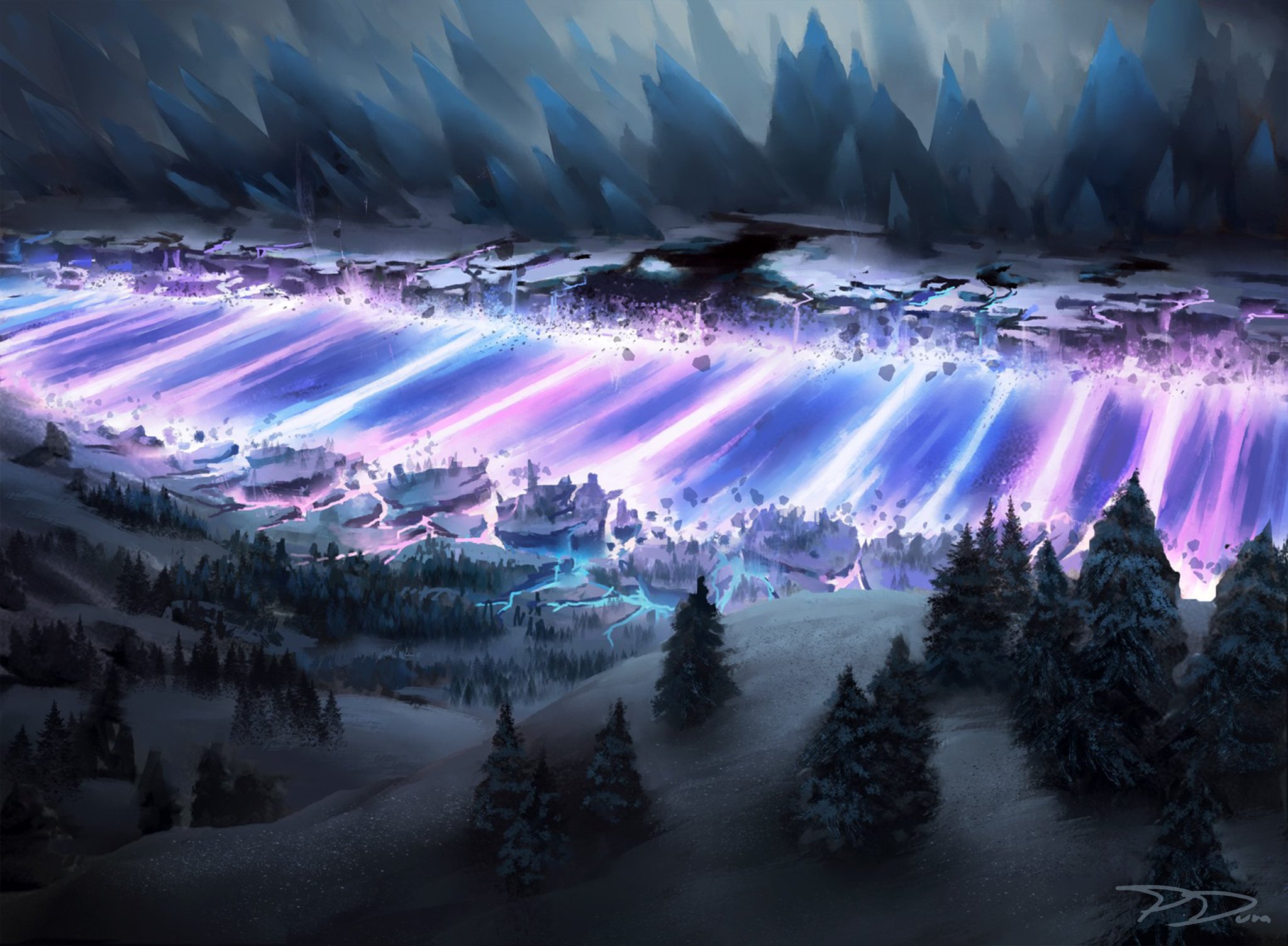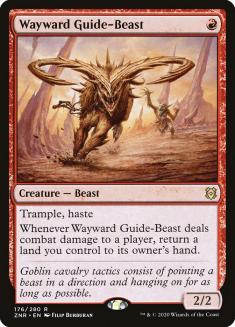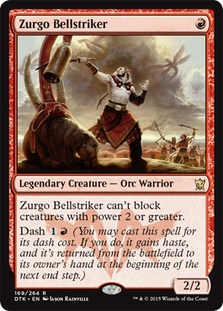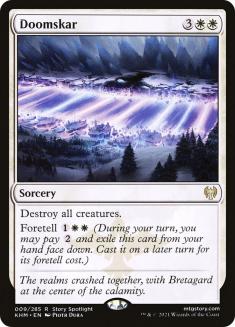Hello, and welcome to this edition of Sullivan’s Satchel. Through Star City Games, my burgeoning media empire is set to reach full bloom, with several projects on the precipice of release, only delayed by SCG’s notoriously strict quality demands, plus my Luddite sensibilities. It has been a joy to get back to business with Cedric, and in some respects it takes me back to the early days of coverage, staying up till 1 AM and scrounging up chips from the hotel lobby (the latter not strictly necessary now but part of the whole experience).
It is weird to be “producing” so much “content” (two words I hate in this context, hence the quotes) when in many respects this is as disconnected as I’ve ever felt from tournament Magic (different than ignorant of it, to be clear). I haven’t covered a physical tournament in about a year, I can’t even aspire to play in something big due to Wizards of the Coast’s (WotC)’s contractor restrictions, and there’s no end to either in sight. Not a complaint; obviously my situation is cool and I’m grateful. Just getting impatient I guess.
With that, the questions. As always, you can submit yours to [email protected] or DM me @BasicMountain on Twitter. One selected question will win Question of the Week, along with $25 in SCG credit. With that,
From Matthew Olson:
Hello. I understand that you worked hard on the new set and feel good about the work you did. This set is trash. I am sorry to be so blunt, but it is a long standing issue. You all make cards for the winners. You are all terrible at making the game fun for the person losing.
I get that I can quit and play a new game. Why should it be more Rogues and trash games of MTG instead of Ticket to Ride? Do you know Flesh and Blood puts the work in to care about customers’ having fun? I feel like MTG is like arrogant companies that have been going out of business lately.
That second sentence is a lot of assumptions but let’s assume that I did and that I do. I’m not sure what “make cards for the winners” means exactly. I’m guessing in context it means something like “create experiences that are enjoyable for the person who ultimately loses,” which is the hallmark of good game design and something that I don’t think Kaldheim is lacking. Foretell lets you do something that’s easy to enable and foists some guesswork/stress on your opponent; that’s a moment that’s enjoyable even if you eventually lose. Boast, the two spells in one turn stuff, and a bunch of the individual designs all let the user have moments of feeling clever and exercising agency, and those feelings don’t go away even if their controller doesn’t win.
I can’t speak to perceptions of WotC’s arrogance – each individual is welcome to feel however they want about it – but I’d bet against them going anywhere anytime soon, as anyone who pays any attention to the quarterly earnings calls would probably attest. I think plenty of games are fun but the blend of longevity and popularity makes Magic a singular offering and I’d be cautious with assuming the grass is greener somewhere else.
From @drewlafrate:
All it an early mail bag, what’s with the [Wayward] Guide Beast over Zurgo [bellstriker]? It feels like a pretty clear call but you’ve always posted burn with the Guide Beast? Are you getting some sort of kick back here
Any card I play or talk about moves units so it doesn’t matter which bulk rare I’m talking about. I usually embrace accusations of impropriety but I want to nip this one in the bud out of the gate.
This is in reference to my Pioneer deck, Boros Wizards, in which I’ve recently cut a single copy of Zurgo Bellstriker for a Wayward Guide-Beast. I don’t think this is an obvious call by any means, but after all the games I’ve logged I’m confident the one Beast is better for a number of reasons.
It is a particularly complicated example because I believe that, if you played 1,000 games, and each time you drew that one-of, if you could choose between Zurgo and Wayward as the card, you’d choose Zurgo more than half the time. That only scratches the surface however.
Wayward Guide-Beast is a superior card when you’re light on mana (sometimes playing as a joint Goblin Guide / Mox Ruby fuse card at the ceiling) or playing against resistance, or alongside Lurrus of the Dream-Den. These are spots where the card is dramatically different from Zurgo and in which you often need the extra equity, the mana-light hands in particular.
Zurgo is typically better on the play when it’s your only one-drop and your hand has a lot of lands. Zurgo is better in these spots but not by a lot, and this scenario isn’t frequent. But because it involves the card being in your opening hand, Zurgo can appear to be “the better card” in the aggregate.
The short answer: it’s not about which card you’d rather draw 51% of the time, but which card provides the most win equity across all games. Wayward Guide-Beast provides a lot more in games that are contentious or where your draw doesn’t cooperate, and those are the positions I’m typically trying to improve.
From Friend of the Satchel Marc-Andre Pelletier:
Is Doomskar gonna be the best board clear ever?
I think it is very good. It’s been cool to see the range of opinion on this one, ranging from “one of the best of all time” to “worse than Day of Judgment.” Even if you fall more towards the latter camp, that’s still a Standard staple. Five-mana sweepers with a bit of upside have seen Standard play with regularity, and the upside on this one is extremely high and scales nicely into more powerful formats.
I’m probably a shade towards the pessimistic interpretation; I think people have a habit of overvaluing cards that are especially good in their opening hand and not appreciating the opportunity cost of those cards as natural draw steps. But again, “pessimistic” still lands pretty close to Day of Judgment and I could easily see it coming in higher than that. Seems like a good bet for “best in class” regardless of the details.
From Rylan Kinnin:
In a Standard or Modern deck using the new Zendikar flip lands/spells, what would be a healthy amount of these lands in a mono or dual colored deck?
Assuming you’re talking about the mythics, the opportunity cost is so low, like almost zero on the first copy and not that much more taxing after that, that if you have any aspirations of playing a longer game you should be playing at least two. I guess this gets more complicated in Modern — Ravnica shocklands increase the opportunity cost of paying life and there’s more competition for nonbasics with utility, plus the games can be so fast that it’s hard to leverage the back half. But for Standard the burden of proof of not playing a few (assuming you play with creatures in your black deck, or otherwise fulfill the minimum obligations) is really high.
The ones that enter the battlefield tapped have a much higher opportunity cost but are still close to no-brainers if the spell in question is something you’d be happy to draw roughly half the time or your deck’s curve isn’t so sensitive such that you can reasonably afford a land entering the battlefield tapped much of the time. Kazandu Mammoth (assuming your deck broadly attacks and blocks) or Tangled Florahedron (assuming you want to ramp) fit the description here.
For the first time in Satchel history, none of the questions I’ve received have met my minimum bar for the credit, so I’m rolling it over and next week’s column will be for a smooth $50. Until next time, try harder.





